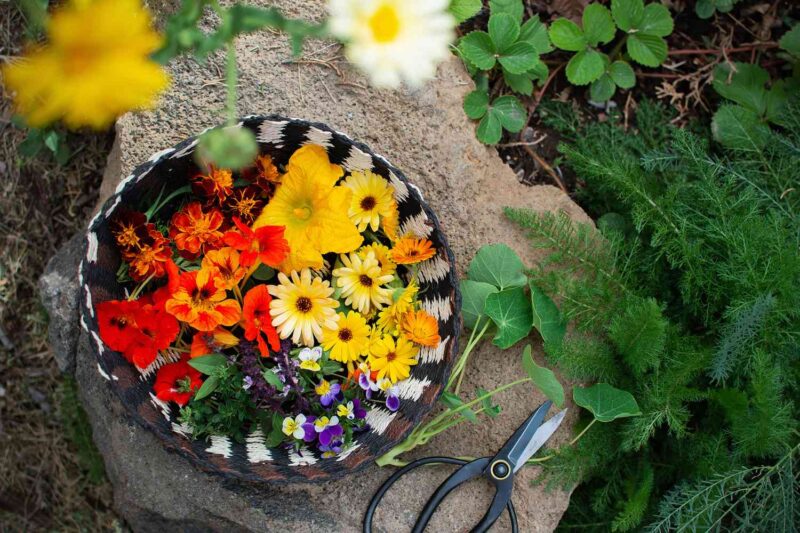Growing your own edible flowers is a delightful way to spruce up not just your garden but also your cooking. With an array of colors and flavors, these blooms enhance the visual appeal and taste profile of many dishes.
From subtle to spicy, the range of flavors is surprising and can elevate a simple salad or dessert to an eye-catching, gourmet fare. Edible flowers have been part of culinary traditions around the world for centuries, and today, they’re enjoying a resurgence among home chefs and gardeners alike.
Cultivating edible flowers is not only about adding a splash of color to your plates; it’s also about the satisfaction that comes from tending and using your own homegrown produce. With the right selection of flowers, you can have a steady supply of garnishes and ingredients that are as fresh as they can get.
Moreover, you’ll be assured of the quality, as you can grow these flowers organically, without the worry of pesticides often found on store-bought varieties. Many common garden flowers that we often overlook are, in fact, a treasure trove of flavor, ready to be discovered.
Key Takeaways
- Cultivating edible flowers allows for a visually and flavorfully enhanced dining experience.
- The satisfaction of using fresh, homegrown flowers adds value beyond just the aesthetics.
- Growing your own provides assurance of quality and the opportunity for organic gardening.
Benefits of Edible Flowers
Growing edible flowers in my garden has provided me with a variety of benefits, from boosting the nutritional content of my meals to enhancing the presentation of dishes with their vibrant colors.
Nutritional Value
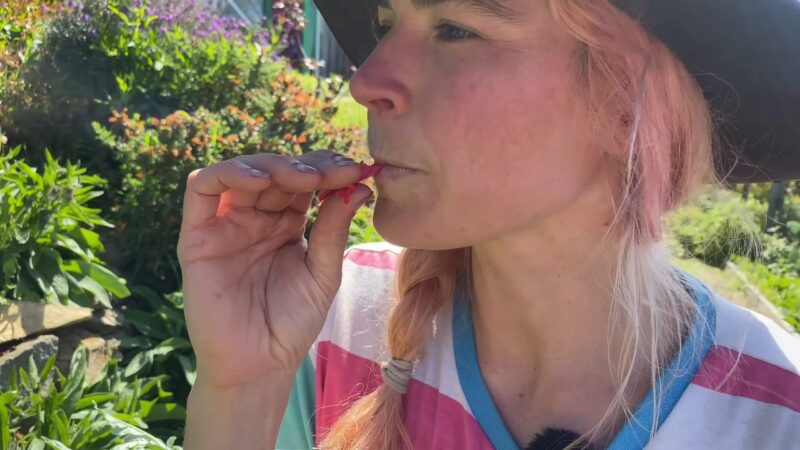
Edible flowers often contain vitamins such as vitamin A and vitamin C, as well as minerals like iron and potassium. For example, dandelions are not only colorful additions to my plate but are also highly nutritious, providing a source of antioxidants and other health-promoting compounds.
Aesthetic Enhancement
The visual appeal of edible flowers is undisputed. When I use them to decorate cakes, garnish cocktails, or add a splash of color to salads, they transform ordinary dishes into extraordinary ones. The beauty of edible flowers is a simple yet effective way to elevate the aesthetics of any meal, combining form with function on the plate.
Culinary Uses

Incorporating edible flowers into my cooking has opened a world of flavor possibilities. With their unique tastes, flowers like angelica offer a subtle, sweet flavor, while others can add a spicy or herby note to dishes. I enjoy experimenting with them in a range of culinary applications, from infusing syrups and oils to creating vibrant sauces.
Common Varieties
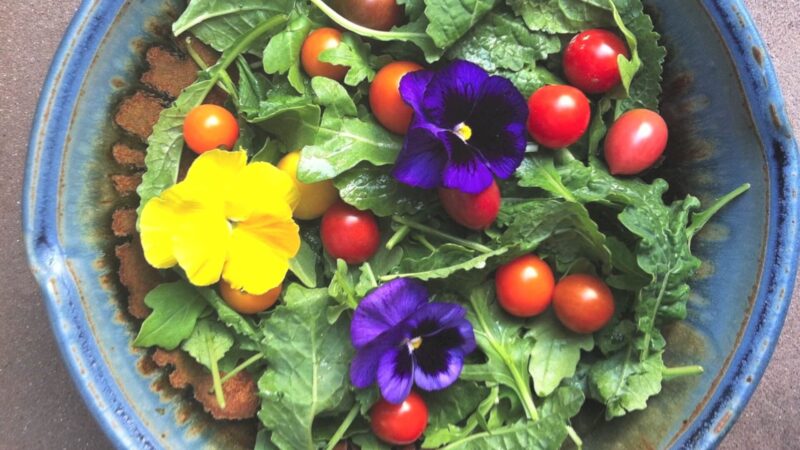
- Pansy- These are one of the most popular edible flowers- for good reason! Their beautiful, bright blossoms will add that wow-factor to whatever you cook. We think pansies are especially impressive on top of cupcakes or cakes!
- Nasturtium- These flowers pack a peppery punch and can bring extra flavor to your salads. Plus, the leaves are edible as well!
- Lavender- We don’t have to introduce you to this plant! Lavender is beautiful, smells amazing, and the small flowers will add a familiar floral note to many dishes. We like lavender baked into cookies or mixed into a latte!
- Chamomile- Yes, like the tea! The dainty chamomile flower can also be used in salads.
- Honeysuckle- Have you ever enjoyed honeysuckle nectar straight off the stem? It’s delicious! These flowers smell and taste very sweet; it’s the perfect garnish in a summer cocktail.
Growing Conditions
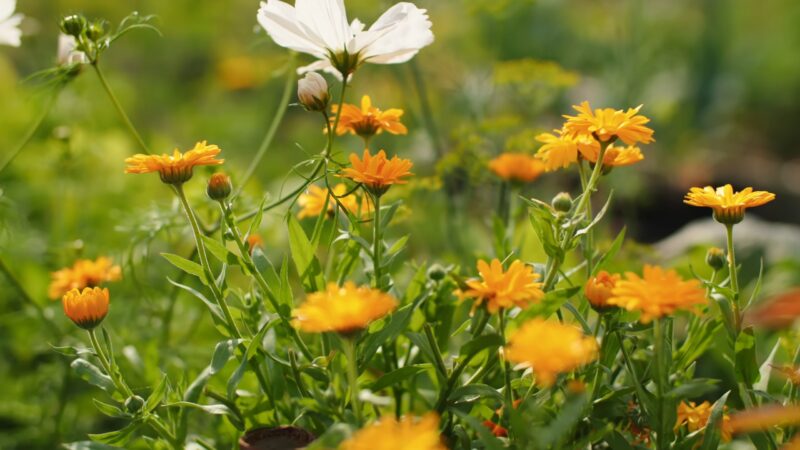
Here’s how I ensure my edible flowers thrive:
- Soil: All edible flowers require well-draining soil. I make sure to enrich mine with compost to promote healthy growth.
- Sunlight: Most varieties need full sun, meaning at least six hours of direct sunlight per day.
- Watering: Consistent watering is key, but it’s important to avoid over-watering, which can lead to root rot.
- Spacing: I give each plant enough space to grow, which also helps prevent fungal diseases.
Safety Considerations
I always adhere to these safety measures:
- Identification: I make sure I’m absolutely certain of a flower’s identity before I consider it for consumption.
- Chemicals: I use flowers from my garden or from sources that don’t use pesticides or other non-edible chemicals, as highlighted in this guide
- Allergies: Before I include any new flower in my diet, I confirm that I’m not allergic to it.
- Cleanliness: I wash all flowers thoroughly to remove residual soil or pests before eating them.
Cultivation Techniques
In cultivating edible flowers, I focus on three critical steps: preparing the soil, planting the seeds correctly, and ensuring consistent watering and maintenance for optimal growth and blooming.
Soil Preparation
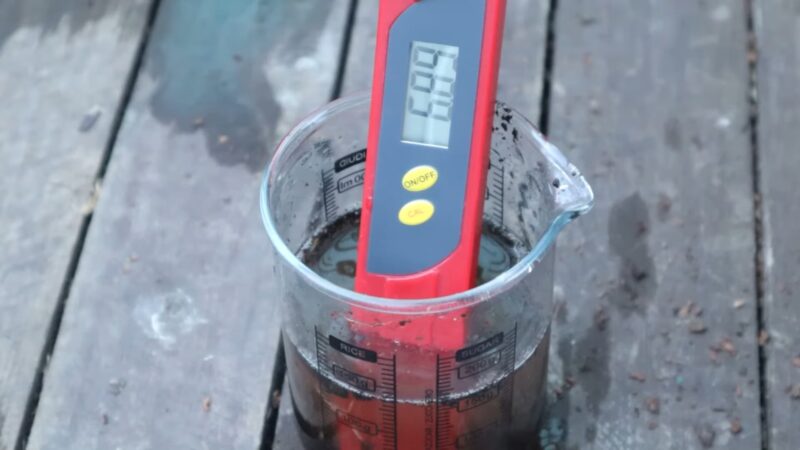
Before I plant, I ensure the soil is neutral in pH level and enriched with organic matter, which promotes healthy plant growth. I incorporate compost to increase the soil’s fertility and improve its structure, providing a strong foundation for the seeds to germinate and roots to develop.
Seeding

I plant the seeds with precision, typically 1 inch deep and spaced about 10-12 inches apart to give each plant room to flourish. Proper spacing is crucial, as overcrowded plants can lead to poor air circulation and increased potential for disease.
Watering and Maintenance
I water the soil to keep it moist but not waterlogged, preventing detrimental conditions like root rot. Regular deadheading of spent flowers is a maintenance practice I employ to encourage further blooming and prolong the flowering period. Additionally, monitoring for pests and diseases forms a part of my routine to maintain a vibrant edible flower garden.
Harvesting and Storage
In my experience, the success of growing edible flowers heavily depends on the proper harvesting and storage methods. Here’s how I ensure that my edible blooms are picked at their peak and stored correctly to retain their freshness and flavor.
Harvesting Guidelines
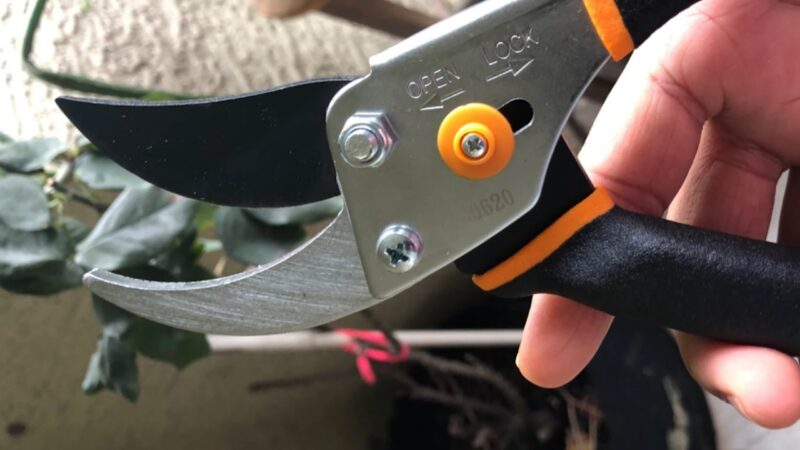
- Best Time to Harvest: I always plan to harvest my edible flowers during the cooler parts of the day to avoid wilting. Early morning, when the flowers are most turgid and aromatic, is ideal. I make it a point to wait until after the dew has evaporated so the petals are dry and less prone to sticking together.
- Tools for Cutting: I use a clean pair of micro-tip pruning shears to snip the blooms right below the flower head. Clean cuts help prevent damage to the stems and remaining buds.
Post-Harvest Handling
Immediate Use: To ensure the best quality, I use my harvested flowers on the same day. If that’s not possible, arranging them gently in a moist, airtight container lined with a damp paper towel is how I keep my flowers from wilting.
Preservation Methods
Short-Term Storage: For short-term preservation, I place the edible flowers in the refrigerator in a container I’ve lined with a damp paper towel to maintain the proper humidity level.
- Long-Term Options: For longer storage, I sometimes dry my edible flowers or use them to make flower-infused oils or vinegars. Quick-freezing individual blooms in ice cube trays filled with water ensures they are ready for later use in cold drinks or culinary presentations.
The careful steps I take in harvesting and storing my edible flowers are integral to enjoying their delicate flavors and aesthetic appeal for as long as possible.
Incorporating Edible Flowers Into Your Diet
Adding edible flowers to my meals not only enhances the visual appeal but also introduces unique flavors and health benefits. They are a natural way to elevate the taste and aesthetics of various dishes.
Salads and Garnishes
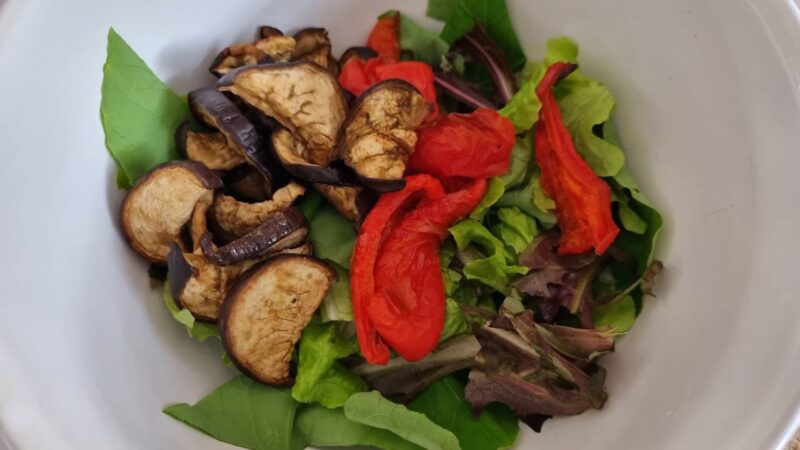
I often use edible flowers to add a pop of color and a hint of flavor to my salads. Flowers like nasturtiums have a peppery taste, similar to arugula, and can really enhance a green salad. Likewise, I sometimes sprinkle vibrant pansy petals or chive blossoms for an onion-like flavor in my green salads.
- Salad Ideas:
- Nasturtiums: Peppery taste, adds spice.
- Pansies: Mild and slightly sweet.
- Chive Blossoms: Onion flavor, great with creamy dressings.
Garnishing my dishes with flowers is a simple way to make them more appealing. I might add marigold petals to a taco for a subtle citrus flavor or scatter violets on top of a chocolate cake for a touch of elegance.
Floral Infusions and Beverages
Floral infusions can elevate my beverages to a gourmet level. For example, I create a soothing tea by infusing chamomile flowers or lavender blossoms, which has calming effects and aids with digestion. Additionally, I sometimes freeze small flowers like borage or rose petals in ice cubes to make my drinks not just tasty but also visually stunning.
- Beverage Ideas:
- Chamomile tea: Relaxing and good for digestion.
- Lavender-infused lemonade: Aromatic and calming.
- Floral ice cubes: Borage for a cucumber taste, rose petals for a classic floral note.
Baking and Desserts
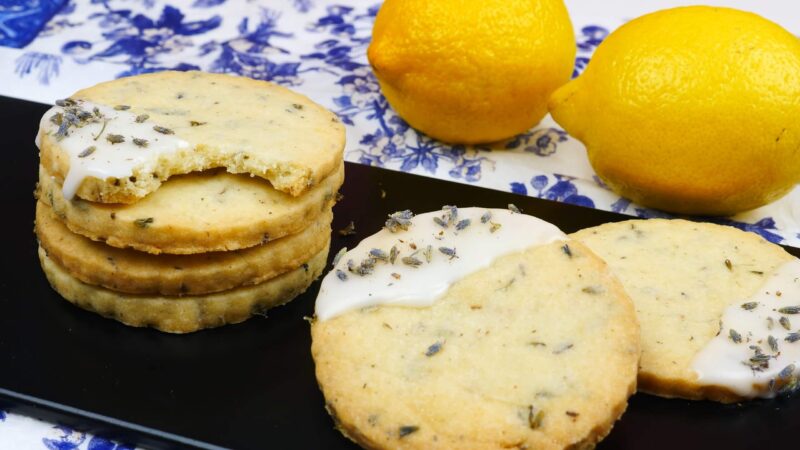
I like to incorporate edible flowers in my baking and desserts to give them a special touch. Roses, with their delicate flavor, can be used in syrups or to flavor sugar for baking. Flowers from herbs like lavender are fantastic when I make shortbread cookies, lending a sophisticated flavor profile to a simple treat.
- Dessert Ideas:
- Rose-infused syrup: Drizzle over pancakes or waffles.
- Lavender shortbread: Fragrant and delicate flavor.
- Candied violets: Decorate cakes or cupcakes for a touch of elegance.
Each of these flowers must be properly identified and checked for edibility, as some can be confused with non-edible varieties. I always make sure they are free from pesticides and other chemicals, often by growing them myself or sourcing them from a trusted supplier.
Frequently Asked Questions
What are the ideal conditions for growing edible flowers indoors?
Indoor edible flower cultivation requires bright light, consistent temperatures around 60-75°F, and good air circulation. Using a well-draining potting mix and providing steady moisture without waterlogging the soil are critical for their growth.
How can you identify and purchase high-quality edible flower seeds?
High-quality edible flower seeds should come from reputable seed suppliers with a track record of seed viability and purity. Look for organic certifications and read customer reviews to gauge seed quality before purchasing.
Which edible flowers thrive best in container gardening?
Edible flowers like marigolds, violas, and calendulas adapt well to container gardening due to their compact growth and lower soil volume needs. These flowers also make for beautiful, functional pot companions.
What are some fast-growing edible flower varieties suitable for beginners?
Nasturtiums and borage are some of the fastest-growing edible flowers, making them ideal for beginners. They germinate quickly and can begin blooming within a few weeks.
Can you provide a list of perennial edible flowers suitable for a year-round garden?
Perennial edible flowers for a year-round garden include lavender, rosemary, and thyme. These not only offer culinary benefits but also add lasting beauty to the garden.
What are some of the top perennial edible flowers known for their taste and ease of growing?
Some top perennial edible flowers include bee balm, with its Earl Grey-like taste and citrus undertones, and chives, which offer onion-flavored blossoms. These perennials offer both tastiness and easy maintenance.
Conclusion
Cultivating your own edible flowers is a rewarding and enriching endeavor that combines the joys of gardening with the art of cooking. It’s a journey that can transform your meals, both in flavor and presentation, offering a unique culinary experience right from your garden. Edible flowers provide not only a burst of color and a spectrum of tastes to your dishes but also contribute to your overall health with their nutritional benefits.
